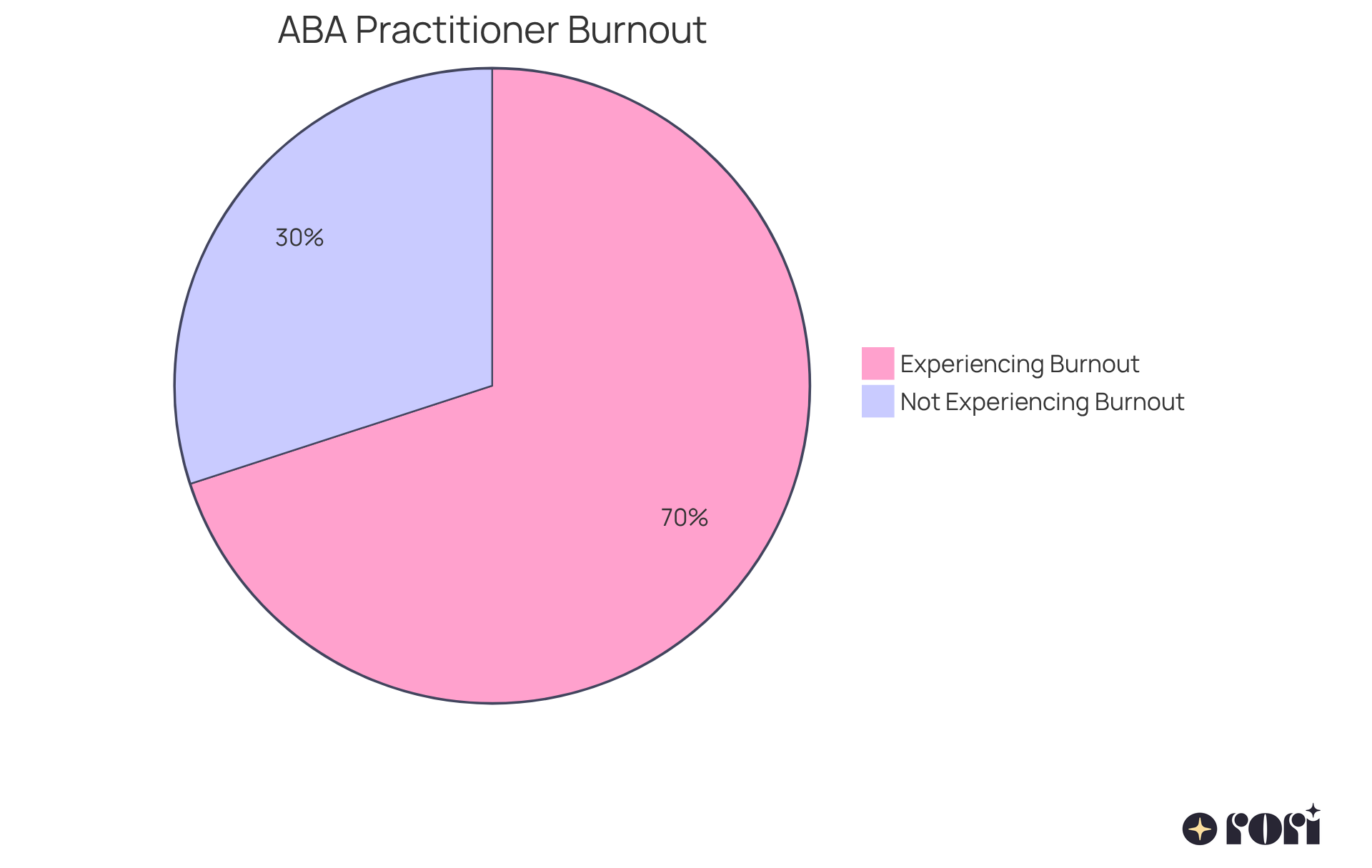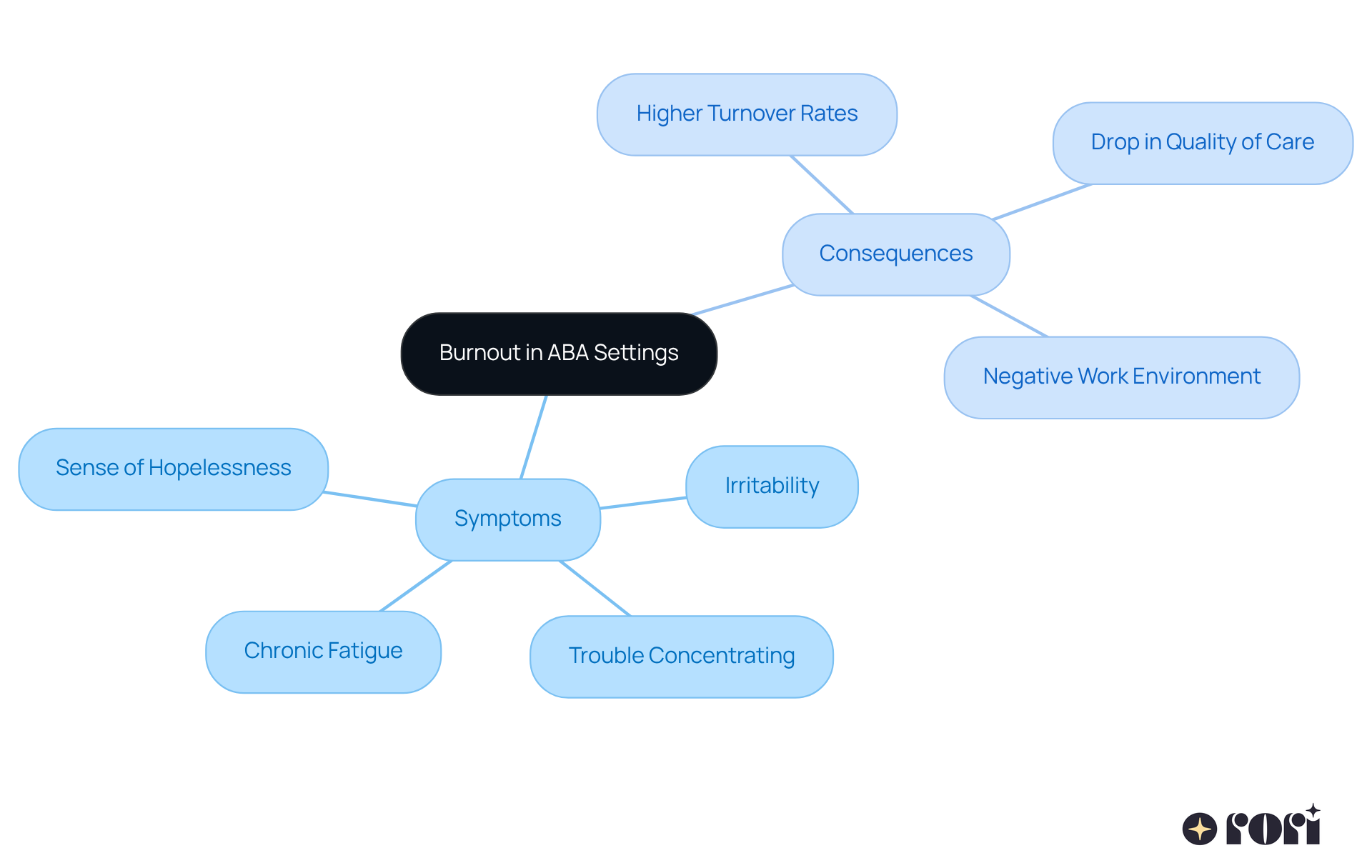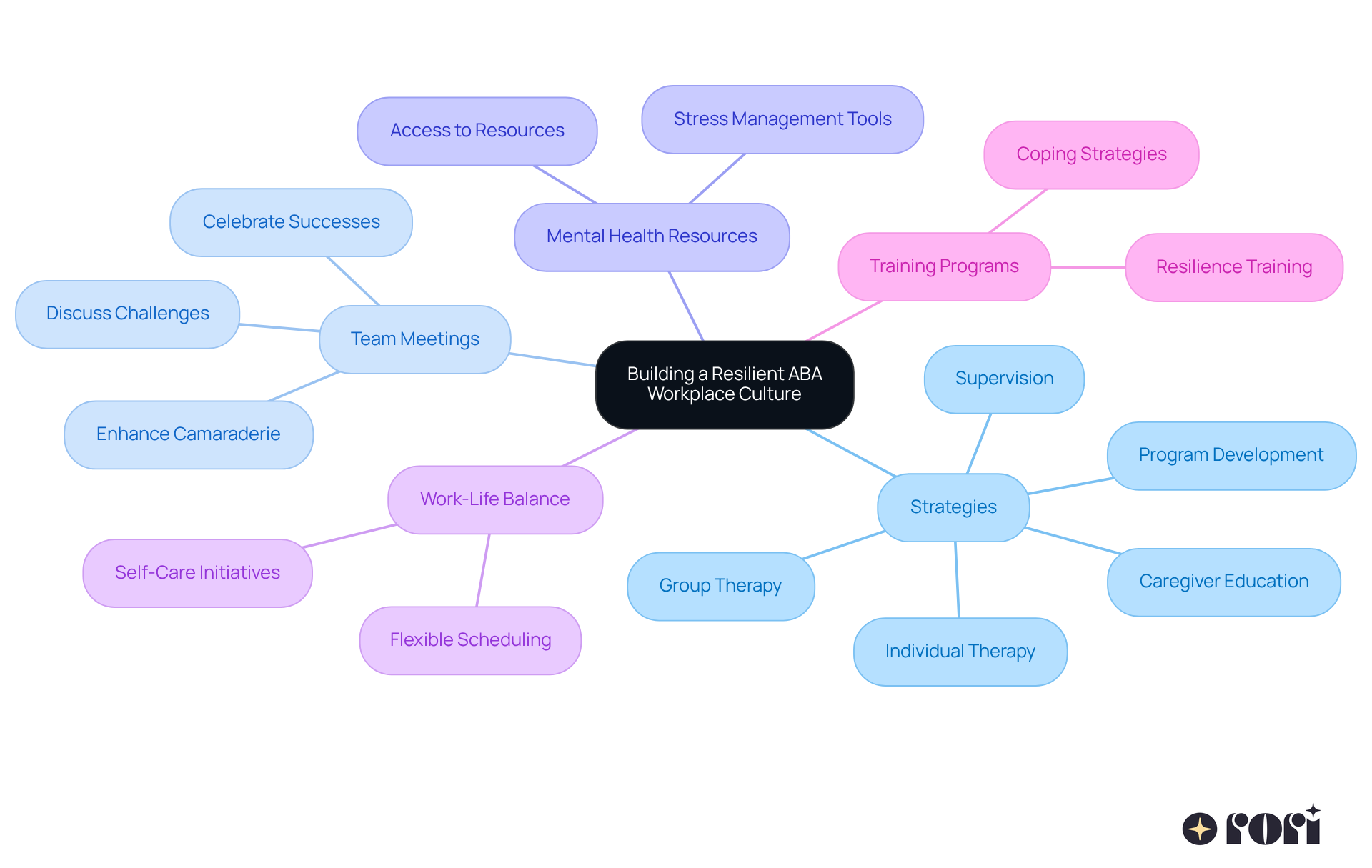This article dives into the important topic of ABA burnout, shedding light on its impact and offering helpful strategies for both parents and clinicians.
Did you know that over 70% of ABA practitioners experience burnout? This can really affect job satisfaction and the effectiveness of therapy.
That’s why it’s crucial to foster a supportive workplace culture and embrace self-care strategies. These steps can significantly improve clinician well-being and enhance the quality of care for our children.
Let’s explore this together!
The demanding nature of applied behavior analysis (ABA) work can take a significant toll on practitioners, leading to a common issue known as ABA burnout. Did you know that over 70% of behavior analysts report high levels of exhaustion? This not only impacts their personal well-being but also affects job satisfaction and the quality of care provided to children.
As we recognize the challenges of burnout, it’s essential to consider how clinicians and parents can come together to create a supportive environment. By prioritizing mental health, we can enhance therapeutic outcomes for our children. Let’s explore this together! What steps can we take to foster that support?
It’s crucial for both parents and clinicians to understand the signs of burnout and its implications. Sharing relatable experiences can help us connect, creating a sense of belonging and understanding. We’re here to help you every step of the way!
Many behavior analysts experience ABA burnout, and it can feel pretty overwhelming. This emotional, physical, and mental exhaustion comes from the demanding nature of their work. Unfortunately, ABA burnout can significantly impact job satisfaction and the effectiveness of therapy, which ultimately affects the quality of care for our little ones.
Did you know that over 70% of ABA practitioners report experiencing ABA burnout at medium to high levels of exhaustion? This can show up as frustration, emotional detachment from clients, and a drop in motivation. When therapists are experiencing ABA burnout, it can be tough for them to engage effectively, and it can also compromise the outcomes for children.
For instance, studies have shown that high levels of exhaustion are linked to increased turnover rates and absenteeism. This disrupts continuity of care, which is so crucial for building strong therapeutic relationships. By recognizing these challenges, we can all work together—clinicians and parents alike—to create a supportive environment that emphasizes mental health and well-being. Let’s enhance the effectiveness of ABA therapy together!

Burnout in ABA settings, often referred to as ABA burnout, can show up in specific symptoms and consequences that many can relate to. Common signs include:
It’s not uncommon for clinicians to feel a dip in empathy towards their clients, which can really impact the therapeutic relationship.
The effects of exhaustion can ripple out beyond the individual. They can lead to:
By spotting these signs early, behavior analysts can reach out for support and adopt self-care strategies. This not only helps them but also benefits the individuals they assist.
Now, let’s talk about something exciting! Integrating AI-driven progress report automation can really boost the efficiency of ABA therapy. This nifty technology can cut down the time spent on administrative tasks by up to 50%, freeing up more time for direct care. By easing some of the operational stresses that contribute to ABA burnout, clinicians can focus more on helping children achieve their behavioral goals through active participation and data gathering.
Let’s explore this together! Finding ways to manage ABA burnout can make a world of difference, both for clinicians and the families they support.

To effectively combat ABA fatigue, fostering a resilient workplace culture is essential. Did you know that about two-thirds of ABA practitioners report feeling moderate to high levels of ABA burnout? This really highlights how urgent this issue is! At Rori Care, our world-class clinicians provide comprehensive and compassionate Applied Behavior Analysis treatment. This includes:
Regular team meetings can be a great way to talk about challenges and celebrate successes. This not only enhances camaraderie but also builds support among staff. Access to mental health resources is crucial, as it gives clinicians the tools they need to manage stress effectively. As Gordon et al. say, "As job-crafting strategies increase, work-life balance increases, well-being increases, work engagement increases, and burnout decreases."
Promoting work-life balance through flexible scheduling and self-care initiatives can really help alleviate stress levels. Training programs that focus on resilience and coping strategies are not just beneficial; they’re also considered an ethical imperative for preventing ABA burnout among practitioners. By prioritizing a supportive culture, organizations like Rori Care can enhance job satisfaction, improve retention rates, and ultimately deliver superior care for children with autism. Let’s explore this together!

Understanding ABA burnout is essential for both clinicians and parents, as it directly affects the quality of care we provide to our children. This type of burnout—emotional, physical, and mental exhaustion—can really take a toll, diminishing job satisfaction among behavior analysts and compromising therapeutic outcomes. By recognizing the signs of ABA burnout and its consequences, we can work together to enhance mental health and well-being in our field.
Key insights from the article reveal that burnout is quite prevalent among ABA practitioners, with many reporting high levels of exhaustion. Symptoms like chronic fatigue, irritability, and a decline in empathy can seriously impact the therapeutic relationship and overall care quality. Implementing strategies such as AI-driven automation and fostering a resilient workplace culture can help ease some of the operational stresses that contribute to burnout. Encouraging open communication, providing access to mental health resources, and promoting work-life balance are crucial steps in creating a supportive environment for behavior analysts.
The importance of addressing ABA burnout truly cannot be overstated. By prioritizing mental health and nurturing a culture of support, organizations can boost job satisfaction, improve retention rates, and ultimately provide better care for children with autism. It’s vital for all of us—clinicians, families, and stakeholders—to engage actively in these strategies so that we can thrive together in a nurturing and effective therapeutic setting. Let’s explore this together!
What is ABA burnout?
ABA burnout is a state of emotional, physical, and mental exhaustion experienced by behavior analysts due to the demanding nature of their work.
How prevalent is ABA burnout among practitioners?
Over 70% of ABA practitioners report experiencing ABA burnout at medium to high levels of exhaustion.
What are the symptoms of ABA burnout?
Symptoms of ABA burnout can include frustration, emotional detachment from clients, and a drop in motivation.
How does ABA burnout affect therapy outcomes?
When therapists experience ABA burnout, it can hinder their ability to engage effectively with clients, which may compromise the outcomes for children receiving therapy.
What are the consequences of high levels of exhaustion in behavior analysts?
High levels of exhaustion are linked to increased turnover rates and absenteeism, disrupting the continuity of care essential for building strong therapeutic relationships.
How can clinicians and parents work together to address ABA burnout?
By recognizing the challenges of ABA burnout, clinicians and parents can collaborate to create a supportive environment that emphasizes mental health and well-being, ultimately enhancing the effectiveness of ABA therapy.